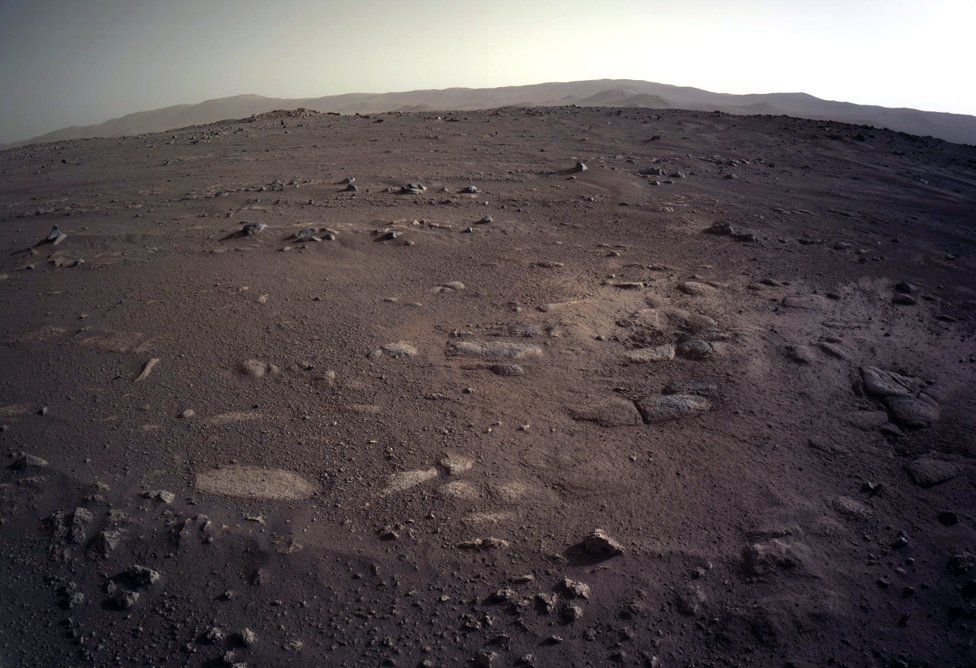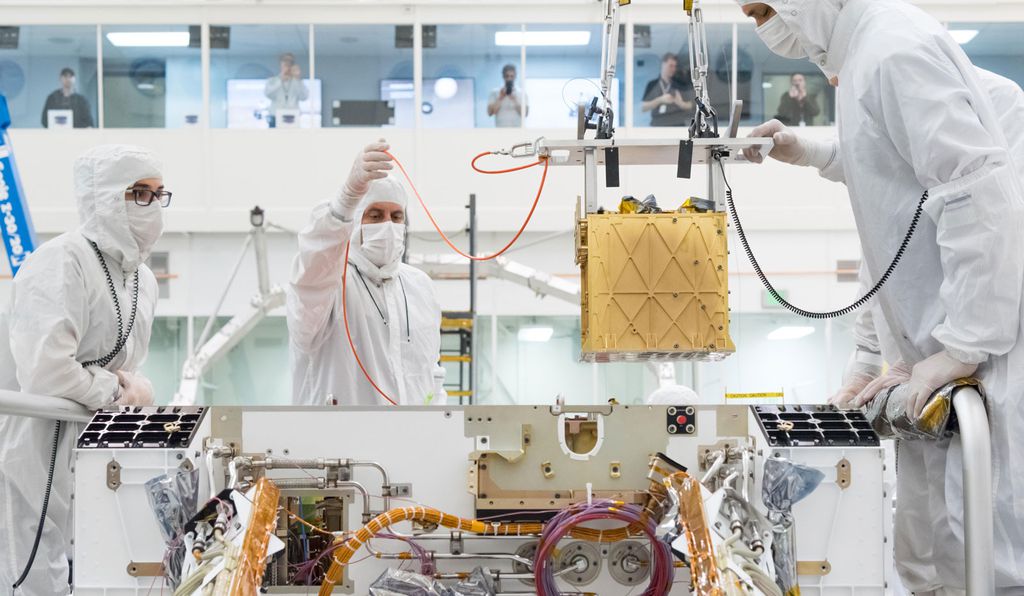Header image: NASA/JPL-Caltech/MSSS
SpaceX CEO Elon Musk says his company's next-generation Starship rocket may be able to land on Mars with passengers by 2026. He's also said he believes not just a colony, but a city of 1 million people, will be set up on Mars by 2050. But, let's be honest: the guy says a lot of stuff, and it's going to take a lot more than hopeful glances to the stars to have a sustainable colony on Mars.
Below are some of the major challenges in setting up a colony on Mars, and what we might do to solve them. (tweet this)
Water
There's only so much water the first astronauts will be able to bring with them to Mars. For future settlers, we'll need a way to generate as much clean water as possible. The International Space Station has already utilized a program for converting urine and sweat into drinkable water, but it wouldn't produce water in the quantities needed for all the needs of a colony.
One possible solution is the development of autonomous mining processes – using robotics to drill down into the soil and extract water, either from water ice deposits around the surface or from rocks containing small amounts of the water that used to be in Mars' oceans. In theory, soil from water-rich areas on Mars could be heated until the water is evaporated and extracted. We'd have to set up such a process in multiple locations before any colony is attempted to make sure we'll be able to produce the needed amount of water.

Oxygen
Colonists are going to want to do a lot of things once they get to Mars, but one of them, certainly, is breathe. Mars' atmosphere is at least 95% carbon dioxide, and scientists have made several proposals for how to convert that carbon dioxide into breathable oxygen in the domes where settlers will potentially live.
One of them, the Mars Oxygen In-Situ Resource Utilization Experiment (MOXIE), is already on the Red Planet, having hitched a ride on NASA's Perseverance rover. MOXIE uses an electrolysis process to remove oxygen atoms from the carbon dioxide. Smithsonian Magazine can detail it better than I can:
The atmosphere on Mars is 170 times thinner than on Earth. Even though that air is so rich in carbon dioxide, the low pressure means that ambient amounts of air floating into MOXIE’s reactive core won’t produce much oxygen. MOXIE’s compressor, however, sucks in nearby carbon dioxide and feeds it to the electrolysis unit at an Earth-like pressure. There, a chemical catalyst operating at 800 degrees Celsius rips away an oxygen atom from each incoming CO2. Pairs of oxygen atoms rapidly combine to form the stable diatomic oxygen, which exits with carbon monoxide.

So, if MOXIE proves effective and efficient, the next step will be sending a much larger version of it to Mars to see if it can be done at scale. The current version of MOXIE makes about six grams of oxygen per hour, which is not enough for a single human to breathe.
Another possibility is using low-temperature plasmas to decompose carbon dioxide into carbon monoxide and oxygen. This proposal still needs to be tested on Mars, however, which is likely years away from happening.
One last thing to note about oxygen: we need enough not just for the colonists to breathe, but produce rocket fuel so that people can, at some point, return to Earth. It takes a lot of liquid oxygen to launch a rocket. NASA wants to know how to generate oxygen on another planet before sending the first manned mission to Mars, so it can ensure those first explorers can come home.
Gravity
Gravity, or the lack thereof, is already an issue for those living on the International Space Station (ISS). Bones and muscles lose their mass over time in low- or zero-gravity environments, and astronauts on the ISS are required to do two hours of physical activity a day to prevent degradation.
Even with consistent resistance training, astronaut Scott Kelly had trouble walking and regaining his regular balance after returning to Earth. A longer-term plan for dealing with the effects of reduced gravity (Mars has 62% less gravity than Earth) would help make sure colonists' bones and muscles, particularly their hearts, remain strong and healthy.
There are existing proposals for how to create artificial gravity both on the 7-9 month journey to Mars and on the planet itself, but these are all very preliminary suggestions, and nothing concrete has been attempted in space, let alone seriously proposed for the destination.
Radiation
There are two kinds of radiation we need to worry about in space: solar energetic particles (SEPs) and galactic cosmic rays (GCRs). SEPs are radiation from the sun, which we're protected against on Earth from our magnetosphere. Mars' magnetosphere is much weaker, so radiation from the sun could be a problem over time. GCRs are the byproduct of the remnants of a supernova. Earth's atmosphere protects us from these, but Mars' atmosphere is weaker.
Pinning down exactly what we'd need to protect colonists from the increased radiation is tricky, since experts are still debating how bad the problem would be. Some believe the level of radiation would bring with it a rapidly increased chance of cancer, neurological degeneration, and death. Others aren't so concerned, and think it's just a matter of proper shielding.
On the trip to Mars, Lithium Metal Hydride could be used as a shielding material to bring radiation levels down to what astronauts currently experience on the ISS. Once on the planet, colonists would have to live in heavily-shielded settlements in low-elevation areas, or take shelter in underground lava tubes.
No matter the solution, settlers on Mars will be dealing with a higher level of radiation than what we experience on Earth, and well above what we consider safe. Even if the radiation level is similar to that of the ISS, it brings with it increased health risks for anyone spending decades there. Exactly how that would all go down isn't quite understood...since nobody has yet spent decades on Mars!
A few other issues to manage
- Temperature – It's typically pretty cold on Mars, with an average temperature of -80°F. Some particularly ambitious scientists think we could terraform the planet, essentially creating a greenhouse effect to warm up the climate. (Musk has proposed "nuking Mars" to make the planet habitable.) In the short-term, however, those aforementioned domes and lava tubes would need to be temperature-controlled in order to make the climate livable for humans.
- Energy – The good news is that it never rains and is hardly ever cloudy on Mars. This means solar panels can be placed almost anywhere humans settle and would constantly be creating energy. That is...except during the intense dust storms that can cover parts of the Red Planet for weeks.
- Soil – Martian soil contains perchlorates (Chemical formula: ClO4), which are toxic to humans. Any attempt to grow food on Mars would require extraction of perchlorates from the soil, and even then, only certain vegetables would likely be able to grow in the greenhouse conditions we'd have on Mars. For example, tomatoes, corn, and carrots are probably out, but spinach, garlic, and onions would likely do quite well.
Think you've got all that figured out? Then pack your stuff. You could be a crewmember on the Ares III:
Share this article on Twitter.
About the writer: Jonathan Harris is a writer for Inside.com. Previously, he wrote for The Huffington Post, TakePart.com, and the YouTube channel What’s Trending.








